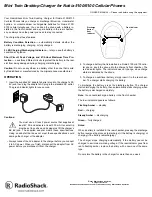
Protection against harmful effects of UVC radiation:
UVC radiation can have a negative biological effect on the human body, both due to its intensity,
as well as the duration of operation. Even a small dose of radiation in person’s eyes can cause
conjunctivitis, which occurs after several hours of exposure to UVC radiation (6 - 8 hours).
In the case of direct intervention, this fact is not immediately realized and therefore this danger is
underestimated. In the case of greater doses, serious eye damage can occur. When the skin is
touched by small doses, it turns red. At high doses, varying degrees or burning can occur.
UVC radiation is not identical to ordinary UV radiation, which is UVA or UVB. UVC radiation is very
aggressive and harmful even in small doses for all living organisms, as well as plants and flowers.
Maintenance of germicidal lamp’s surface:
The germicidal lamp can be cleaned by conventional cleaning products, with a damp cloth to
prevent leakage of the cleaning product into the fan grids. In the case of dust deposits on the grids,
wipe them with a damp cloth or use a vacuum cleaner.
Limit exposure values for non-coherent optical radiation
Wavelength [nm]
Exposure limit
values
Unit
Body part
Risk
180 – 400nm
(UVA, UVB,
UVC)
Heff = 30
[J.m²]
- Photokeratiti
- Conjuktivitis
- Cataractogenesis
- Erythema
- Elastosis
- Skin cancer
- Eye cornea
- Ocular conjunctiva
- Eye lens
- Skin
Lifetime of germicidal lamp:
Given the nature of the disinfectant radiation used, the UVC spectrum and its aggressive and
destructive effects on some of the construction materials used (gradual abrasion of the materials
by this radiation); the typical lifetime of the germicidal lamp is 7 years.
After this declared lifetime of the equipment, it is necessary to carry out a general
inspection/reparation and replacement of worn parts. Given the destructive effects of UVC
radiation, it can be expected that the equipment will need to be decommissioned and replaced with
new equipment.
8


































